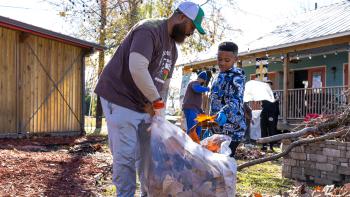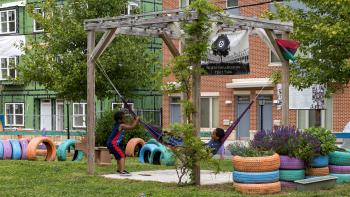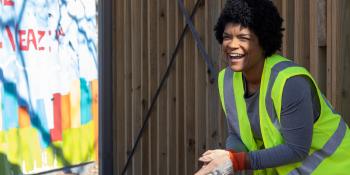
Neighborhood revitalization in action
Communities work with Habitat to improve current and future residents' quality of life
Habitat for Humanity uses a neighborhood revitalization approach in communities across the U.S. to invest in locally driven projects that improve residents’ quality of life. Partnering closely with residents and strategically concentrating our efforts in under-resourced areas allows Habitat affiliates to maximize their local impact and gain a deep understanding of the root causes driving disinvestment.
From building local parks to scaling homebuilding to opening community gardens, discover how residents and affiliates are using Habitat’s neighborhood revitalization approach to drive change in their communities.
Charlottesville, Virginia | Southwood
Habitat Greater Charlottesville purchased Southwood Mobile Home Park in Albemarle County, Virginia, in 2007 with the long-term goal of redeveloping the 120-acre community into a permanent, mixed-income neighborhood without displacing any of its 1,500 residents.
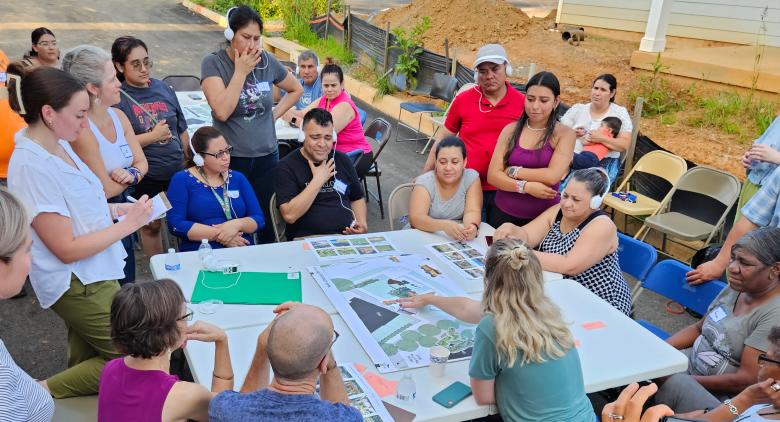
Residents participate in the design and planning of the Southwood Community in Charlottesville, Virginia.
In 2019, Habitat Greater Charlottesville and Southwood residents successfully secured rezoning approval and began co-designing a site plan that includes trails, green spaces, and a mix of market-rate and affordable homes. The county approved the plan in 2021, and the first Habitat homeowners moved into their homes in December 2023.
Dacono, Colorado | The Glens
In 2017, residents of The Glens — a rural neighborhood in Dacono, Colorado — partnered with St. Vrain Habitat to form a resident-led coalition called Pride of the Glens. The coalition brings neighbors together to create programming for youth and families, beautify the neighborhood and increase active transportation. It has sparked change through housing repairs, neighborhood cleanups, a new community center, transportation advocacy, block parties and more.
Lafayette, Louisiana | McComb-Veazey
Residents of Lafayette, Louisiana, created the McComb-Veazey Neighborhood Coterie more than a decade ago to address the neighborhood’s needs and challenges, including its aging housing stock, lack of community spaces and high truancy rates among students.
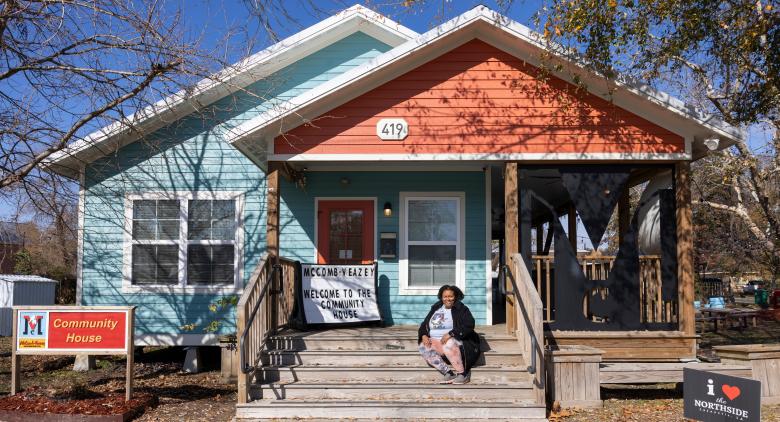
Tina Shelvin Bingham, executive director of the McComb-Veazey Neighborhood Coterie, smiles outside of the new Community House in Lafayette, Louisiana.
Lafayette Habitat partnered with the coterie as part of the Quality of Life pilot, and together they’ve helped launch a youth entrepreneurship academy and build more than 40 affordable homes in McComb-Veazey. They’ve also converted a blighted property into a neighborhood meeting and gathering space called the Community House.
Long Beach, California | Washington
Homeownership rates in Long Beach’s Washington neighborhood are lower than 10%. In partnership with the resident-led Washington Neighborhood Coalition, Habitat Greater Los Angeles is building 46 new homes and has rallied community members to advocate for equitable land use policies that will allow for more affordable homeownership opportunities.
The coalition has improved parks and lighting, painted murals, supported youth sports programming and access to laptops for school children, and supported safe access to schools through a resident-driven Safe Passages program. They have also invested in building the capacity of residents through a multi-year leadership training program.
Moncks Corner, South Carolina | Wall Street / Mitton Lane
The Wall Street Neighborhood Coalition worked with Habitat and other local partners in Moncks Corner, South Carolina, to build the Community’s Hope Impact Center. The center is a 1,600-square-foot gathering place that offers classes for community members of all ages.
A new nonprofit, Grace Impact Development Center, assumed much of that work and focuses on bolstering health outcomes in the Wall Street neighborhood. They launched the Harvesting Hope Food Pantry and Tower Garden Legacy Project to improve access to fresh produce. They have also started a welding training program that provides skills training and potential career opportunities for youth and adults.
Muncie, Indiana | South Central + Thomas Park/Avondale
Greater Muncie Habitat formed the 8twelve Coalition in 2015 to spur investment and build collective impact in the South Central and Thomas Park/Avondale neighborhoods in Muncie, Indiana.
The coalition partners with more than a dozen local organizations and works through five resident-led action teams — housing, business development and employment, education and family support, beautification, and wellness — to maximize its community impact. Significant changes include increased access to healthy food, increased sidewalk presence and repairs, and development of pocket parks and recreation programming.
Philadelphia, Pennsylvania | Sharswood/Brewerytown
Following decades of disinvestment in Philadelphia’s Sharswood and Brewerytown neighborhoods, residents are leading revitalization efforts through the collaborative efforts of the Brewerytown Sharswood Neighborhood Coalition and the Brewerytown Sharswood Community Civic Association. The coalition was co-founded in 2018 by Habitat Philadelphia and the BSCCA and has completed dozens of home repair projects, hosted free estate-planning clinics, successfully advocated for library funding, developed a community garden and more.
Pittsburgh, Pennsylvania | Larimer
Habitat Greater Pittsburgh and the Larimer Consensus Group have partnered to improve quality of life in the city’s Larimer neighborhood. Centering revitalization efforts around access to housing, both organizations have worked alongside residents to deliver critical home repairs and build affordable housing strategies, including redeveloping an abandoned school into a residential building.
They’ve also engaged with residents to build the Village Green Amphitheatre for community-hosted events and to create and upkeep parks, squash courts and two community gardens and organize neighborhood cleanup days.
Pittsfield, Massachusetts | Westside
In Pittsfield’s Westside neighborhood, Central Berkshire Habitat runs a community navigator program that trains residents to connect their neighbors with resources to find affordable housing, secure workforce development training and build advocacy skills. The program began with a handful of community navigators and has grown to include more than 50 resident leaders.
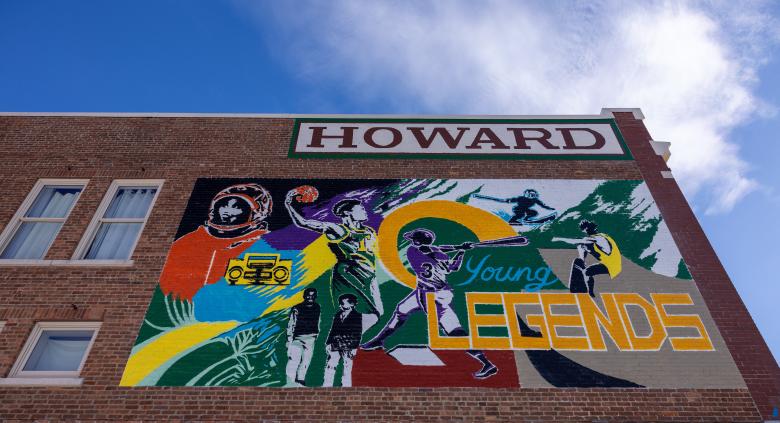
The “Young Legends” mural on North St. in Pittsfield, Massachusetts, was created to “specifically focus on the successes of the people within the entire community who represent Pittsfield,” says local artist Trinity Rivard.
In partnership with residents, Habitat also has successfully installed sidewalks, built a new park, invested in homeownership and repair, painted murals and hosted neighborhood cleanup days.
Portland, Oregon | Cully
In 2010, a group of local organizations formed the Living Cully Coalition to help improve the quality of life of residents in Cully, an under-resourced neighborhood in Northeast Portland. Habitat Portland Region joined the coalition in 2012 and has worked alongside residents to advocate for affordable housing and combat displacement.
The Living Cully partners have developed or rehabilitated nearly 500 affordable housing units, with an additional 300 units planned or under construction. Their advocacy has resulted in city-wide legal protection of mobile home parks and created a community-driven tax increment finance district to invest US$100 million to prevent displacement and keep Cully affordable.
